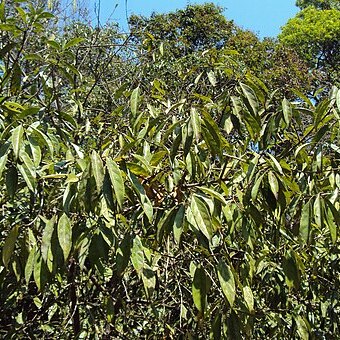Small shrub to large tree. Leaves very variable in all characters. Inflorescence usually a spike, rarely a raceme, but in subsp. leptophylla sometimes reduced to a fascicle in the axils of the leaves or beneath them, in subsp. thwaitesii sometimes a panicle of racemes. Fruits ampulliform to globose, in subsp. leptophylla and subsp. thwaitesii from globose to ellipsoid, ovoid or ampulliform, in subsp. cochinchinensis var. imbricata ovoid to ellipsoid. Seed and embryo curved.
A medium sized tree. It can grow 18 m tall. The trunk is grey or dark brown. The young twigs have rusty hairs. The leaves are simple and alternate. They are broadly oval and 12-19 cm long by 4-9 cm wide. They taper to the tip. The base is wedge shaped. There can be small teeth around the edge. The flowers are in spikes. The fruit are flask shaped and 5-7 mm long by 4-5 mm wide.

